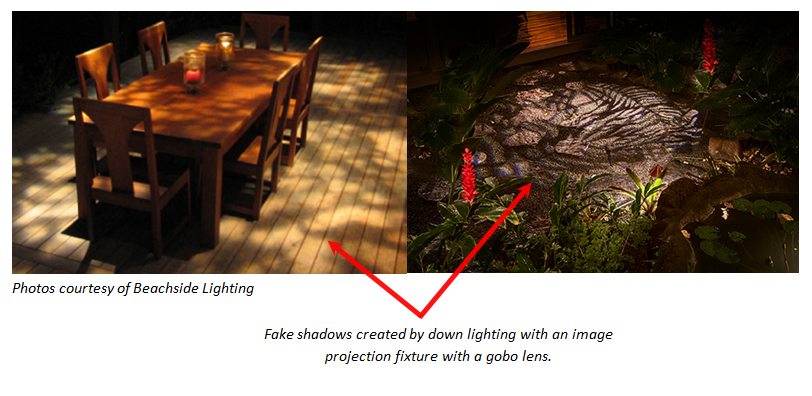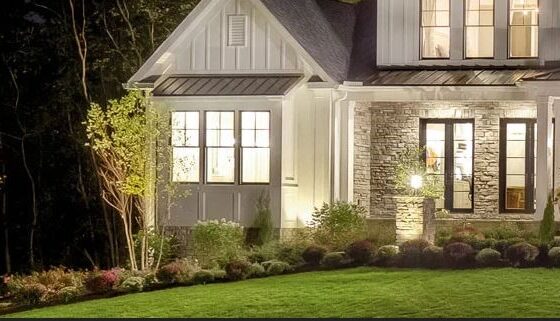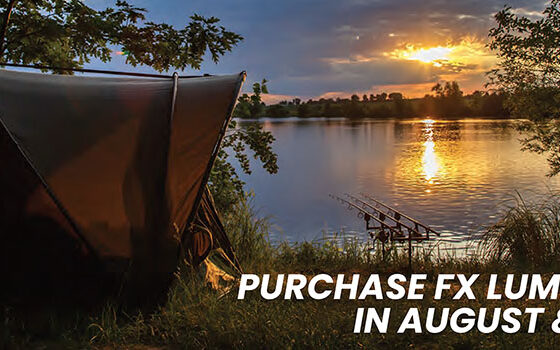Sometimes in lighting, it’s not necessarily what’s being illuminated that creates visual interest, it’s the shadow that’s thrown or a silhouette that’s back lit that generates significant “wow” factor. The key to casting good shadows is having something that’s fairly open and “airy” or a good shape that casts well. So for trees that might be a Japanese maple, river birch, or bamboo, etc. It would not be taxus, arborvitae, or any other dense, compact shrubbery.
Landscape and Architectural Lighting
Things to look for: trees with open branch patterns, sculptures and yard art pieces, certain outdoor vases or water features, etc., but the key is having a wall, solid fence, the ground or some sort of a surface that the shadow can land on and still be attractive. The most challenging consideration is whether you have the right space and angle to install the fixture so that it can throw the light where you need it to land. Shadows can be cast on the ground via down lighting, or up on a vertical or ceiling surface through the use of accent fixtures or wall washes mounted below or adjacent to an object.
Intensity
Fixture placement and where the light beam passes through the object are essential to a good shadow. If you’re using an accent light (commonly called a “bullet” light), due to the intensity of its beam spread and the way the beam widens as it moves away from the fixture, it’s generally best if you can position it further away from the area to be illuminated.
This also works to soften the intensity of the light, too. You will need to experiment and see what the best fixture position, light angle, etc. to get the look you want. Additionally, some of the cheaper LED lamps and fixtures don’t have properly engineered optics (optics control the beam spread), so you get a repeating shadow and it’s not a good look.
Another wonderful fixture to use for lighting of walls, silhouettes and close proximity shadow lighting is a “wall wash.” This fixture has a wide angle beam spread and emits more of a “blob” of light rather than the intense beam of a bullet light. Several manufacturers have introduced dimmable versions of both accents and wall washes so it gives you great flexibility in the field to dial in the level of light that’s appropriate for your project.

Anchoring
Anchoring the fixture is another important aspect to consider when not using a stake in the ground. If you are mounting a fixture to a tree, then use extreme care and take your time. Assemble the fixture to its tree-mount hardware. Then use bungee cords or clamps to hold it in place and test the location at night. This allows you to move the fixture easily without making unnecessary holes in the tree. Once you find the right spot then use proper stainless steel hanger bolts to offset the tree mount away from the bark.
Leaving an air gap between the junction box and bark. This prevents moisture and insects from building up and compromising the tree. Mounting on a house or structure? Use surface mounts or metal strap brackets to mount the fixture. There are a number of different options to choose from. The other thing to remember: if you down light from a tree or house, you need a way up there. Bucket trucks, ladders, hiring a tree climber or an arborist who wants to do lighting, etc. You’ll also want to make sure you have all of the needed safety equipment. And, be sure your insurance policy covers you if you’re doing work of this nature.

Faux Shadows
Another option to cast a shadow (albeit a fake one) is the use of an image projecting fixture with a steel or painted glass GOBO lens. These grew out of the theatrical lighting world, and have found a home in landscape and architectural lighting. You can cast branch patterns on the ground or across a building façade. And, you do not even pass light through a tree to do it. Many of these fixtures are used for commercial purposes. They can shine a logo, a promo, or a message on a sidewalk or a large wall. The options are limitless as there are thousands of lenses to choose from or have a custom lens made.
 Shadow and silhouette lighting are truly better shown in photos than described in words, so here are some examples. Enjoy making magic with your lighting!
Shadow and silhouette lighting are truly better shown in photos than described in words, so here are some examples. Enjoy making magic with your lighting!












